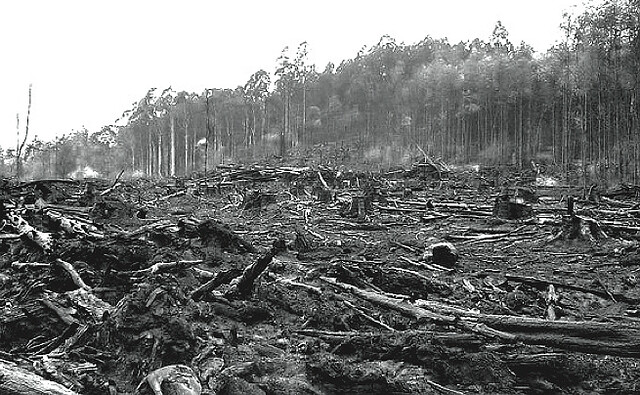Habitat destruction is the process in which natural habitat is rendered functionally unable to support the species present. In this process, the organisms that previously used the site are displaced or destroyed, reducing biodiversity.[1] Habitat destruction by human activity is mainly for the purpose of harvestingnatural resources for industry production and urbanization. Clearing habitats for agriculture is the principal cause of habitat destruction. Other important causes of habitat destruction include mining, logging, trawling and urban sprawl. Habitat destruction is currently ranked as the primary cause of speciesextinction worldwide.[2] It is a process of natural environmental change that may be caused by habitat fragmentation, geological processes, climate change[1] or by human activities such as the introduction of invasive species, ecosystem nutrient depletion, and other human activities mentioned below.
The terms habitat loss and habitat reduction are also used in a wider sense, including loss of habitat from other factors, such as water and noise pollution.
(From Wikipedia, February 2015)


